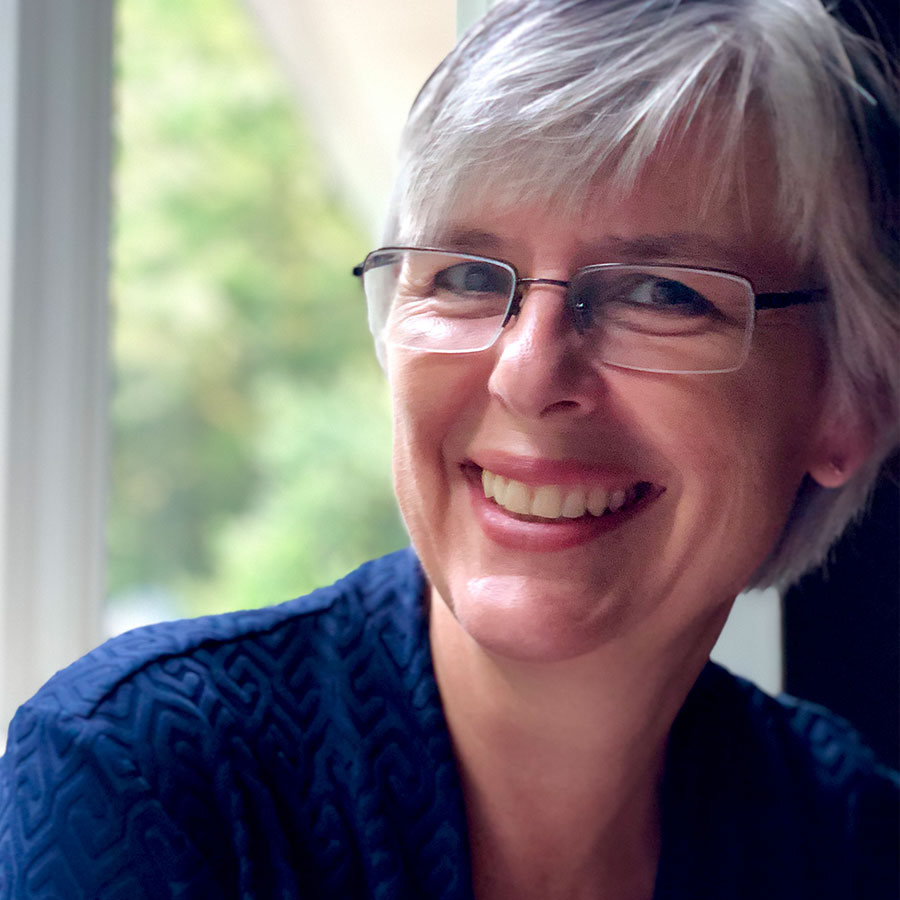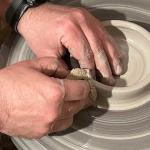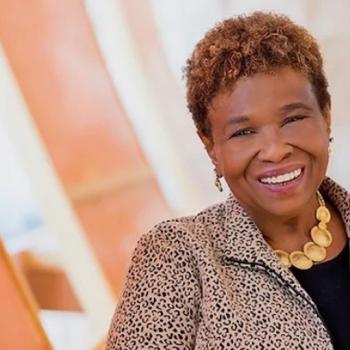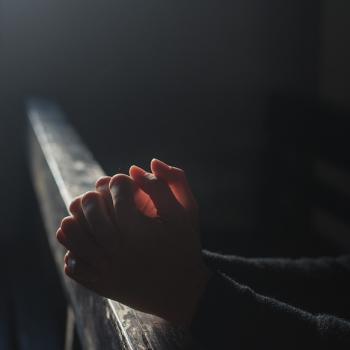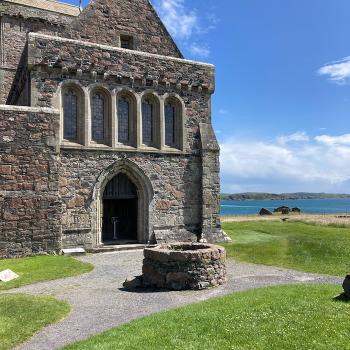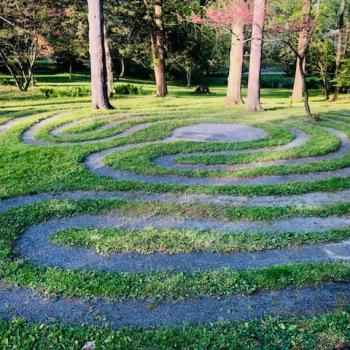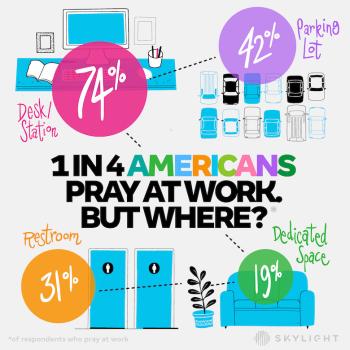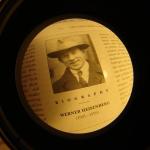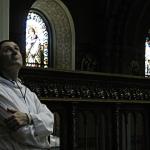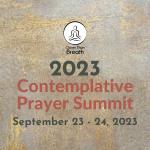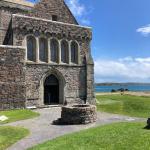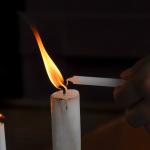In worship services from many different traditions, prayer is structured. Types of prayer are labeled. Times for prayer are scheduled. Words of prayer are composed. Places for prayer are set aside. But prayer that takes us beyond these boundaries expands our connection to the divine. And perhaps from there deepens our understanding of the limitless presence of spirit in our lives.
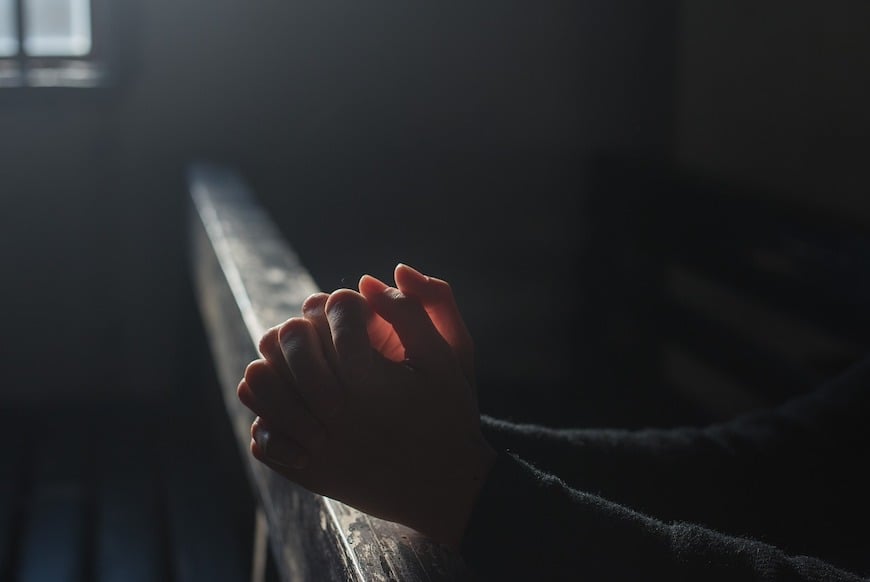
Today I prayed for peace, strength, and clarity. Leading a Presbyterian congregation in a traditional worship service, I prompted the congregation to sit at the appropriate time. Some slumped their bodies a little lower during this final time of intercessory prayer at the end of the hour-long service. Some just lowered their chins a bit closer to their hearts. This is the big prayer. We have raised our songs of praise, confessed our sins, and been assured of God’s grace. We have dedicated our offerings, financial and otherwise. But this is the long prayer at the end. With our final words of gratitude for God’s presence among us, we lift the concerns of our community.
The Pace of Prayer
I pray rather slowly, too slowly for the rhythm of this traditional worship service and the slot allotted for this final prayer. I pause between petitions. Not moments of silence, but pause for the breathe to enter. When the congregation joins me in the Lord’s Prayer at the end, I can see that my pace has been too slow for them. I have to match their speed in darting to the finish line. And the glory forever. Amen. At the end of the service I was thanked for the good job I had done by some, but was also given the feedback that it could be shorter, faster, fewer pauses.
Granted, this is a congregation that watched me grow up as a little girl hiding under the robes of my father, the minister. His voice, lowered to a deeper timbre, filled every corner of the beautifully carved gothic nave of the sanctuary. The melody of his Glaswegian accent alone could have put someone into a hypnotic state, but his words, pure poetry, were the type of prayer that seeped into you like honey coating a sore throat. I remember as a child folding my body in two during his prayers, my forehead touching my knees, and listening only to the sound of his voice. Then awakened by the amen, I blinked open my eyes, stretched back to upright, and flipped through the hymnal for the last part before coffee hour. It was not the words he said that held me in prayer, but the sound and the posture.
Now a somewhat regular attender in the church where I grew up, and a minister myself, I have the opportunity to lead this ‘big prayer’ on occasion. And when someone congratulates me on “doing a good job”, I feel as if I have failed. I have not welcomed them into conversation with the divine. Instead I have fit my prayer into the allotted space. I have sped up my pace and shortened my pauses to match the rhythm of the congregation. Have I, however, found a way for them not to be bystanders in my communion with spirit, but participants in prayer? Can they lift their heads from prayer and still see spirit swirling in the sacred space of the sanctuary?
Expanding from the Narrow Places
At a recent session of Alignment: Interfaith Contemplative Practices, a virtual space for shared interfaith prayer, Marni Loffman, a Jewish prayer leader, offered the opportunity for participants to expand their understanding and practice of prayer. Their session was entitled Season of Liberation: Finding Freedom in Song. They spoke about finding an expansiveness from the narrow places of our lives through the act of prayer. In this case it was sung prayer and thoughts put into the chat in this time of communal, creative, and cross-cultural prayer. We breathed together. We chanted together. In a language that some of us did not know. And that did not matter. The space was created that allowed us to reflect on the narrow spaces in our lives and to find expansion in them and for them. Our lungs expanded with spirit. Our hearts opened to the divine in new ways of expression.
Marni expressed their understanding and gratitude for the space:
The act of what Alignment is doing, of creating prayer spaces that are communal, that are multicultural and multifaith, allow for an expansiveness in what prayer, what worship, what spiritual expression can look like. When I come from within my own tradition and classical Jewish spaces, there are certain rules and certain ways that things are supposed to go. In this space I can be rooted in tradition but also feel an openness, a liberating power. What does it mean to be alive and in connection with multiple worlds and people and spaces? Bringing expansiveness into what prayer can mean is such a beautiful thing.
Freeing from the Traditional Posture of Prayer
Prayer found in connection. They allowed me to think about expanding the prayer that I had offered in the traditional worship service that morning. It was a service focused on eco-justice for Earth Day. I wove images of God’s presence as found in the natural world into my prayer to connect to the sermon offered. But what I wanted to do was to take that time of prayer into those spaces in the world. To experience the peace and strength and clarity as found in God’s creation. Actually in these sacred spaces of creation.
What I prayed:
We pray for peace.
Peace for those who are at war. For those who cannot keep their children safe.
For those who live their lives in fear. Fear on the streets where they live.
And fear in their own homes.
For those tormented by the very thought of living another day.
May we see them, merciful God, as you already do.
May we know your peace in these moments of prayer and be vessels, filled to overflowing
That your peace might spill from us like the cascading waters of your good earth.
How I would expand that prayer:
Put your hands in the cool cascade of the waterfall. As the water slips through your fingers, watch its path. Downstream it slides over rocks, and ripples in collected pools. Knowing not where it is headed, it continues. Upstream it is ever-flowing. It is unmeasured. Its depth unknown. Its cadence, however, steady and sure. It is the peace for the fearful heart and the tormented mind in its surety and constancy. Put your hands in the cascade and know the peace of God.
What I prayed:
We pray for strength
For those who wake in the morning not knowing in what direction to turn.
For those who crave what harms them. For those in pain, physical, and mental, and spiritual pain.
For those who have experienced loss that has left them empty.
For those who are not free to share their true identity, who they know they truly are.
May we hold them, as you already do.
May we know the strength that comes from you that we might be their rock
That your strength might steady us like the majestic mountains of your good earth.
How I would expand that prayer:
Set your feet on the ground and walk. Take the road less traveled. Feel the incline of the path rising to hill, your heartbeat quickening like new life forming. And stop to put your hands in the grass. Feel that which supports our very existence, which underlies our shelter, which produces our sustenance, which teaches us of growth. Sense the support in every step. Climb the mountain of what lies before you and know the strength of God.
What I prayed:
And we pray for clarity
For those who are in positions of power. In our city, our nation, in every nation.
Those who make decisions that ripple down to those living in poverty
Those who are unaware of the part they play in systemic racism,
All of us who cannot see how we are harming this planet with our waste and our consumption.
May we all be held in the light of your unquenchable love.
May we know the clarity that comes when we set our hearts and minds at rest in you
That your light might lift us like the cloud of witnesses that surrounds us even now.
How I would expand that prayer:
Hold your face to meet the sun. The light that filters even through eyes closed shut. The shapes and colors that emerge when you look away. Images before unseen. And listen for what surrounds you. Chirps and crunches and rustles that were there, unnoticed when we did not make the space to listen. You are surrounded in the light of the divine, in the clarity of what is present and yet unseen. And you have been in prayer. Connected to the spirit of creation in peace and strength and a clarity that comes from expanding the narrow spaces of our practice.
Amen. Ashe. Aho. Shanti.


